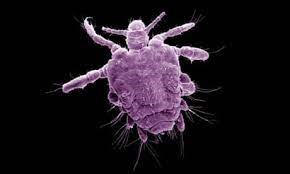Please click the frequently asked questions below for further information and IPC precautions required:
What is Pubic Lice?
Pubic lice, Phthirus pubis (also known as ‘crabs’), are tiny parasitic insects that primarily live in pubic hair. Infestations with the parasites are known as pthiriasis or Pediculosis pubis.
The parasites can infest other areas including eyelashes (causing pediculosis ciliaris), and areas of coarse hair such as the abdomen, chest, underarms, beard and moustache.

How does it spread?
Pubic lice infestations are usually spread through sexual contact. It can also be spread through prolonged direct contact with infested individuals/ clothing.
What are the symptoms of Pubic lice?
Signs and symptoms of pubic infestation include:
- severe itch (which is worse at night)
- Excoriation with possible secondary infection from scratching
- Detection of black powdery substance in underwear
- Blue/grey macular spots in affected areas.
For those infestations affecting the eyes blepharitis, conjunctivitis, or corneal epithelial keratitis can occur.
Why is this important?
If NIAS staff are aware that the patient has a suspected or confirmed case this should be communicated to the Control Room (Emergency or Non-emergency as appropriate) and the staff in the receiving unit when transferring the patient to ensure effective patient care and management.
IPC Precautions
- Contact Precautions should be used.
- Hand Hygiene should be completed as per the 5 moments in line with usual practice.
- Eye protection should be risk assessed for any concern regarding a splash risk.
- A Fluid Resistant Surgical Mask should be worn.
- Gloves and Aprons should be worn.
- The patient should be transported via ambulance with no other patients present.
- Laundry should be treated as contaminated, placed into an alginate bag and placed into a red laundry bag.
What cleaning is required?
All equipment and the ambulance should have an in-between patient clean, paying particular attention to touch points.
Do staff need prophylaxis or follow up?
No staff follow up required.
